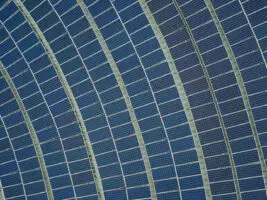(Editor’s note: This is part of a series of interviews and stories that will run over the next few weeks looking at Germany’s Energiewende, and the transition of Germany’s energy grid to one dominated by renewable energy. You can find them all in our Insight section).
Solar PV at 2c/kW by 2050? It’s simply a matter of when, not if, the solar industry says. But the head of one of the world’s leading research organisations is warning that the biggest problem may be creating enough capacity to meet demand.
That’s not the big issue right now for the solar PV industry. For the last two years, solar manufacturing capacity has far exceeded demand, leading to cut-throat pricing that undercut manufacturing costs, causing huge losses and many to be forced out of business.
That balance is now being redressed, as rationalisation takes hold and demand soars in Japan, US, China and some emerging economies. The good news for consumers is that manufacturing costs are still coming down.
Eicke Weber, the head of the Fraunhofer Institute for Solar Energy Systems in Freiburg, Germany, the biggest solar research facility in Europe, and the second biggest in the world, says the greatest concern is that cheap solar may be available to just 10 per cent of the population.
That is why Weber is now advocating what he describes at PV 2.0 – an ambitious plan to build a pan-European manufacturing capacity along the same lines as the Airbus consortium.
Part of this plan is motivated by the desire to ensure that Europe retains the manufacturing capacity of an industry it kick-started through the feed-in tariffs launched in Germany and then adopted around the rest of the continent – and more recently in Australia, Japan and China.
German equipment manufacturers have done well out of the Chinese manufacturing boom, even if German module manufacturers didn’t prosper quite so well in the long term. The equipment suppliers sold some €60 billion worth of equipment to the Chinese manufacturing industry, but the Chinese government is now mandating that 80 per cent of that equipment be supplied locally.
Hence the need for a European manufacturing capability that can match others on scale and cost, for the sake of businesses all along the value chain.
Weber says the challenge is more about financing manufacturing facilities at that scale, rather than the emergence of any particular technology. He says the industry is destined for higher efficiencies and lower production costs, and higher degrees of automation as a matter of course.
“Europe has a great opportunity to lose if we do not succeed in financing production plants for our innovative new PV technologies,” Weber told RenewEconomy in an interview in his office in Freiburg earlier this month.
The challenge, he says, is to install modern equipment at the scale needed to ensure that solar manufacturing companies are profitable at module prices below 50c/Watt. “I like to call this savings at scale, the X gigawatt factory,” Weber said. “That X could be any number, from 1GW to 5GW, or more, but let’s start at 1GW.
“You need to have a certain vision right now, because the industry is not making a lot of money. The 40GW market will soon become a 100GW market, and then a 300GW market.
“If, in 2050, when solar electricity might cost us 2c-3c/kWh, when it is the least expensive way of electricity, it would need total installed capacity of 10,000GW of solar PV to meet just 10 per cent of the world’s demand. Today we have just 100GW.
“We need to get to annual production of 300GW very soon. Even with that we would take 30 years to get to that target.”
Weber says he has no doubt that the capacity will be built, the only question is by whom – which is why he is arguing for a pan-European response. He says the window of opportunity to grab this market is in the next three to four years.
He says Europe has all it needs in terms of research institutes, equipment and materials suppliers, banks and financing, trader, systems integrators and contractors, and construction companies.
The missing link is in the gigawatt-scale manufacturers for silicon, wafers and cells and modules. To match the Chinese, or other countries such as Saudi Arabia with its petrol dollars, a European venture would need credit guarantees and low-interest financing.
“This capacity will be built, because as soon as there is an economic opportunity, they will come. The question is only by whom. “








